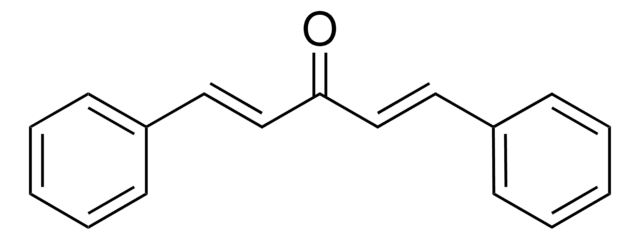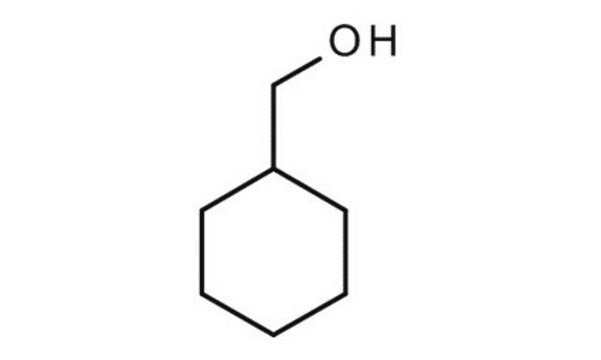09143
Benzaldehyde
analytical standard
Sinónimos:
Bitter almond
About This Item
Productos recomendados
grado
analytical standard
Nivel de calidad
densidad de vapor
3.7 (vs air)
presión de vapor
4 mmHg ( 45 °C)
Análisis
≥99.5% (GC)
formulario
liquid
temp. de autoignición
374 °F
caducidad
limited shelf life, expiry date on the label
lim. expl.
1.4 %, 20 °F
técnicas
HPLC: suitable
gas chromatography (GC): suitable
índice de refracción
n20/D 1.545 (lit.)
n20/D 1.546
bp
178-179 °C (lit.)
mp
−26 °C (lit.)
densidad
1.044 g/cm3 at 20 °C (lit.)
aplicaciones
cleaning products
cosmetics
environmental
flavors and fragrances
food and beverages
personal care
formato
neat
cadena SMILES
O=Cc1ccccc1
InChI
1S/C7H6O/c8-6-7-4-2-1-3-5-7/h1-6H
Clave InChI
HUMNYLRZRPPJDN-UHFFFAOYSA-N
¿Está buscando productos similares? Visita Guía de comparación de productos
Descripción general
Find all available reference materials for compounds listed in 10/2011 here
Aplicación
Palabra de señalización
Danger
Frases de peligro
Clasificaciones de peligro
Acute Tox. 4 Inhalation - Acute Tox. 4 Oral - Aquatic Chronic 2 - Eye Irrit. 2 - Repr. 1B - Skin Irrit. 2 - STOT SE 3
Órganos de actuación
Respiratory system
Código de clase de almacenamiento
6.1C - Combustible acute toxic Cat.3 / toxic compounds or compounds which causing chronic effects
Clase de riesgo para el agua (WGK)
WGK 1
Punto de inflamabilidad (°F)
145.4 °F - closed cup
Punto de inflamabilidad (°C)
63 °C - closed cup
Equipo de protección personal
Eyeshields, Faceshields, Gloves, type ABEK (EN14387) respirator filter
Elija entre una de las versiones más recientes:
¿Ya tiene este producto?
Encuentre la documentación para los productos que ha comprado recientemente en la Biblioteca de documentos.
Los clientes también vieron
Protocolos
-Tolualdehyde; Valeraldehyde; Isovaleraldehyde
Nuestro equipo de científicos tiene experiencia en todas las áreas de investigación: Ciencias de la vida, Ciencia de los materiales, Síntesis química, Cromatografía, Analítica y muchas otras.
Póngase en contacto con el Servicio técnico













